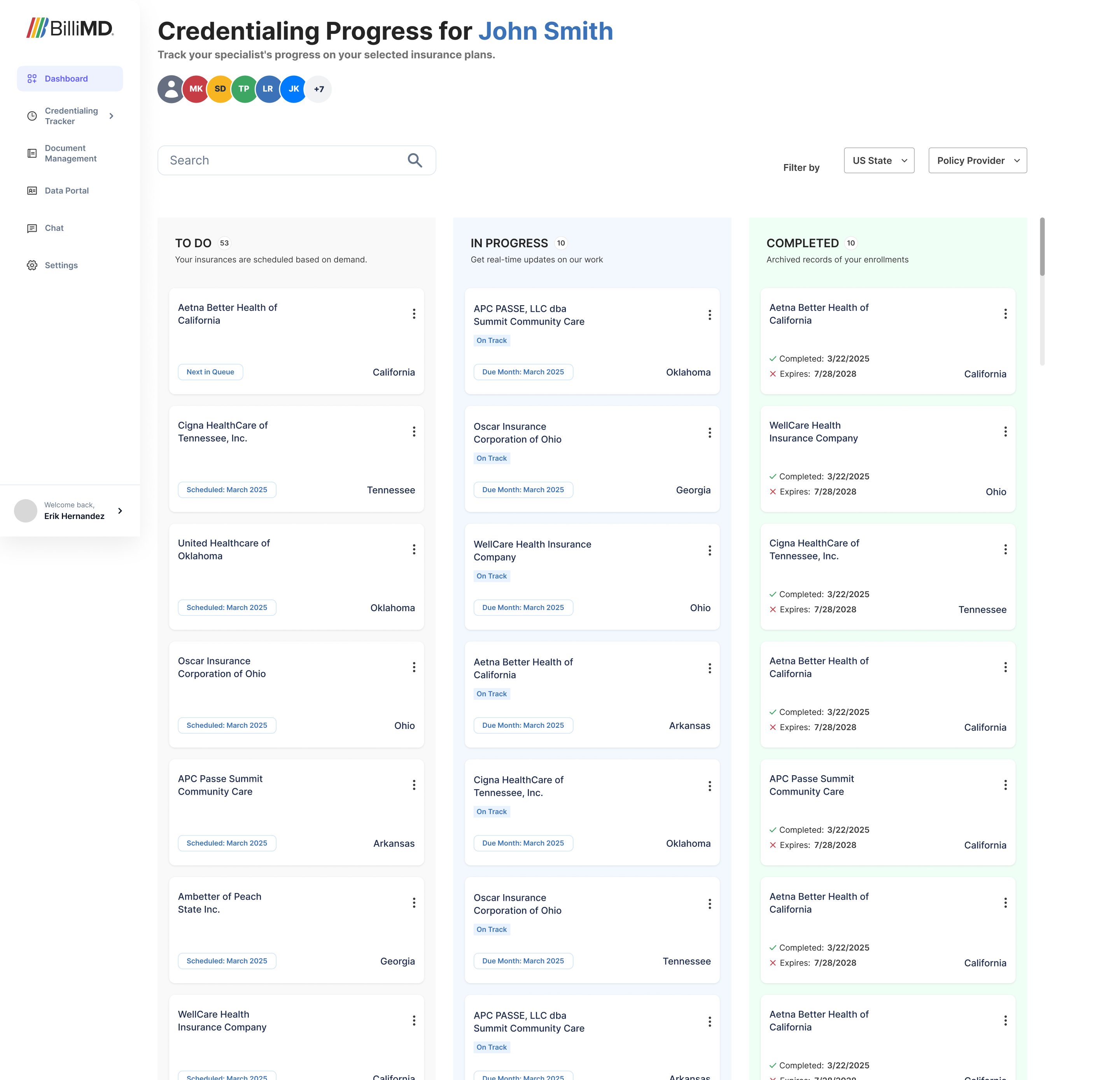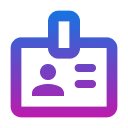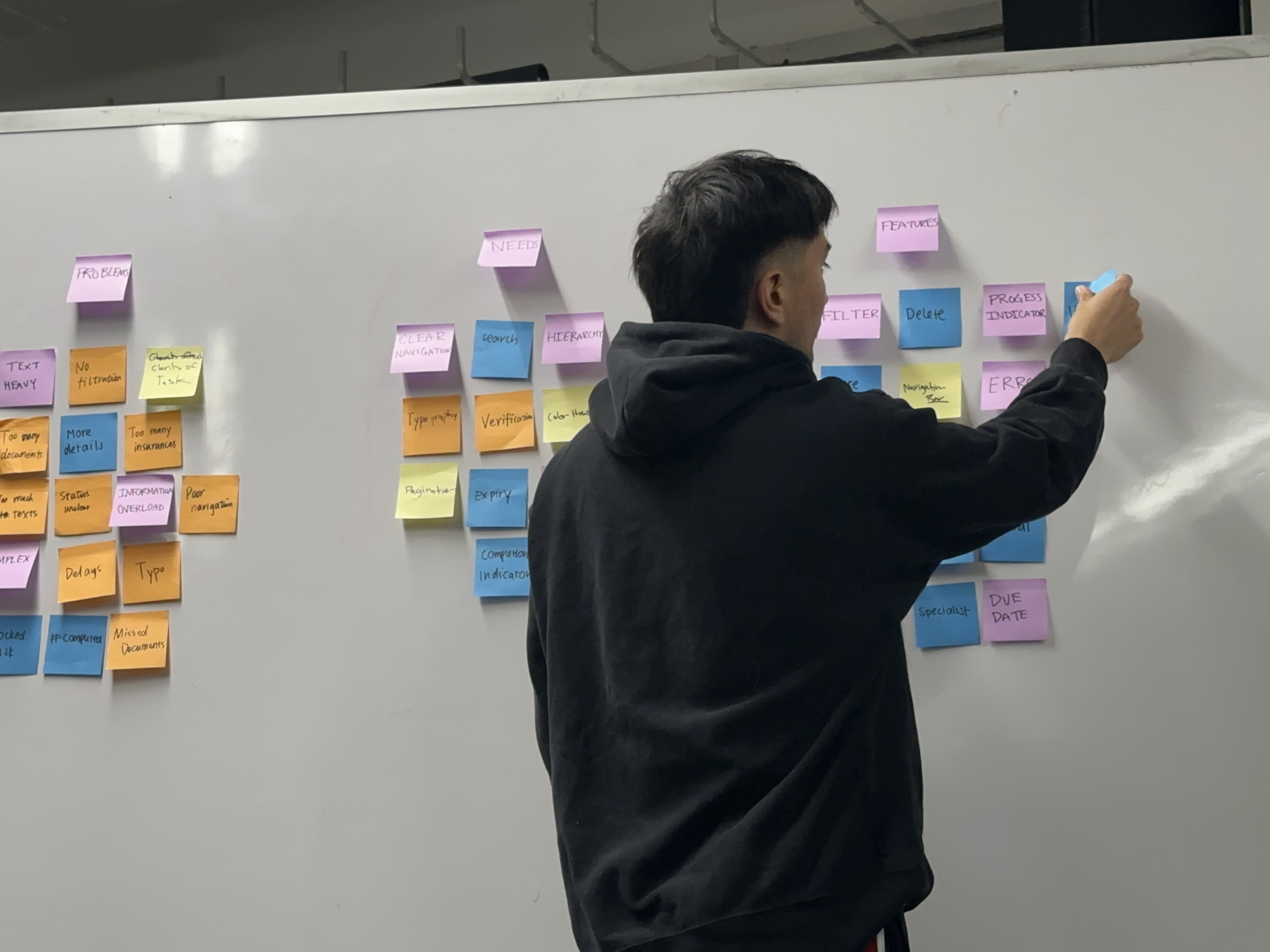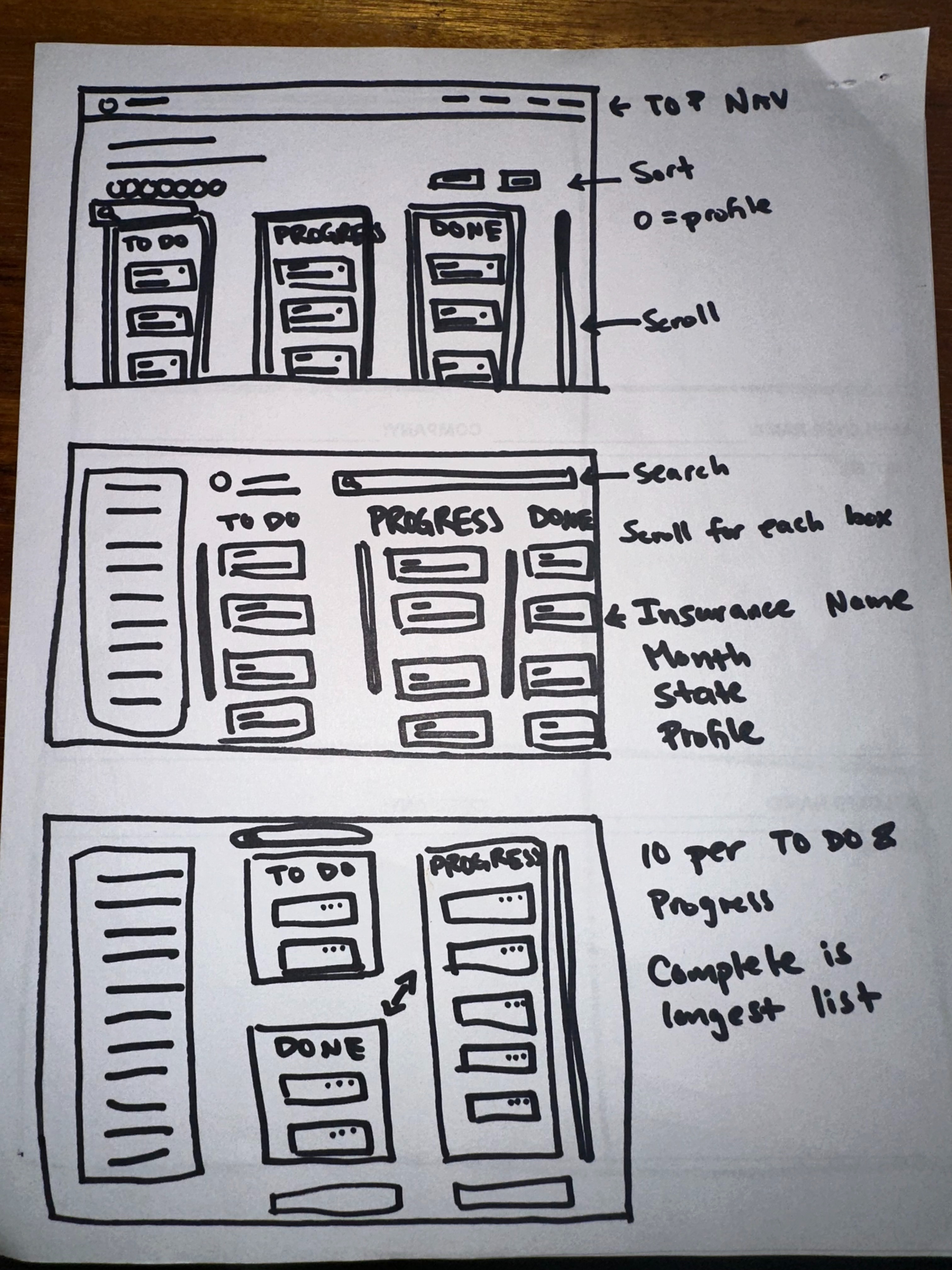Verified Docs. Simplified Access.
.png)
Role
UX Intern
Team
Project Manager
Sr. UX Designer
UX Designer
8 Weeks
Methods
Product Design
Strategic Thinking
User Research
Card Sorting
Wireframes
Prototyping
User Testing
Tools
Figma
Slack
What Is Medical Credentialing?
At BilliMD, we help doctors manage medical credentialing, the process that verifies their qualifications with insurers to ensure patient safety and quality care.
The Problem
The credentialing process is slow and varies across insurer, doctors need to manage multiple applications and scattered updates across platforms. With little visibility into progress or errors, they often miss urgent fixes that lead to delays and lost revenue.
The Internal Challenge at BilliMD
BilliMD relied on Excel sheets to communicate progress. When issues arose, doctors received buried, text-heavy messages, making it hard to spot problems or act quickly.
Consequences of the Problem
85% of credentialing applications are delayed, costing doctors up to $120K each and over $1B nationwide in lost revenue.
Solution
To fix that, we created the Credentialing Tracker, giving doctors real-time insight across insurers to stay organized and avoid delays.
.png)

On one side are individual doctors (B2C) seeking a simple way to track their credentialing progress across multiple insurers and upload documents for review. By uploading through BilliMD, we can catch missing files and errors before submission.
On the other side are hospitals (B2B) that use BilliMD to manage credentialing for entire teams. Admins oversee multiple doctor accounts, reviewing updates and document uploads all in one place.
.png)
I learned how doctors get credentialed by insurers to legally practice and ensure patients receive safe, ethical, and qualified care. BilliMD acts as the middle man, bridging doctors and insurers, catching errors early to speed up an often slow, error-prone process.
Credentialing can take between 90-150 days involving application, verification, peer review, committee decisions, and privileging.

Credentialing isn’t permanent, doctors must be recredentialed every 2–3 years.
Without visibility into progress, doctors risk missed deadlines and lost revenue.
We ran card sorting exercises to find where most errors happened in the credentialing process. From this, we knew we needed to design clearer task organization, better filtering, and easier ways to spot urgent issues and errors.


When creating wireframes, I focused on fixing key issues in the original Excel-based system; no filtering, poor visual hierarchy, and too much information at once. My goal was to design a layout that felt clear, organized, and easy to act on.
I tested the first version of the Credentialing Tracker with users. They appreciated the progress tracking and filters but struggled with what to prioritize.
Feedback & Issues Identified:
→Overusing bold text made task priority unclear
→Elements like the expiration filter and profile icon added unnecessary clutter.
.png)
In the second round of designs, I focused on using bold text more intentionally, clarifying task priorities, strengthening visual hierarchy, and removing clutter.
Feedback & Issues Identified:
→Users later shared that they didn’t want the completed tasks column greyed out, as they still needed to see expiration dates.
.png)
With the final designs, we wanted users to easily complete three main actions:
1. View task details and chat logs that once lived in the text-heavy Excel sheets
2. Delete tasks so BilliMD can reprioritize what they review
3. Filter tasks for faster navigation.
.gif)
.gif)
.gif)
Just when we thought the project was complete and users were breezing through tasks, the stakeholders threw us a curveball; they wanted a full visual redesign. The goal: make the interface feel more modern. So, we refined the colors, updated the navigation, and refreshed the layout. Luckily, the user flow stayed intact, so we only had to update the visuals design.

We prioritized the desktop experience since it’s what most users rely on for credentialing work. However, we also designed tablet and mobile versions to give doctors and admins flexibility to track progress, review updates, and respond to issues on the go.
.png)
This project taught me the importance of clarity, prioritization, and adaptability in complex systems like credentialing. Collaborating with stakeholders and developers helped me turn feedback into clear UX solutions while balancing user needs, business goals, and technical constraints that can change unexpectedly.